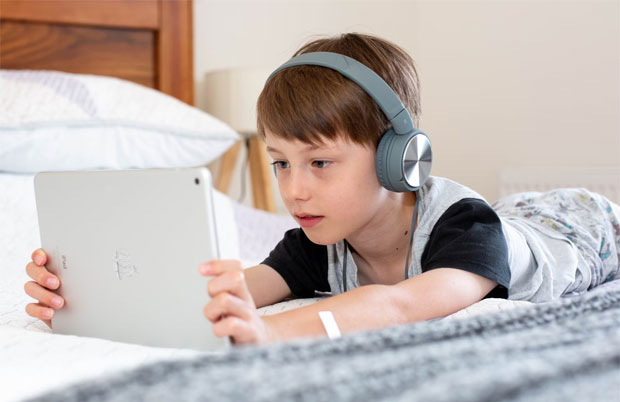The Evolution of Parental Control Technology

The Evolution of Parental Control Technology
Parental control technology has come a long way since the early days of the internet. With the rise of smartphones, tablets, and other connected devices, parents have more concerns than ever about what their children are accessing online. As a result, companies have developed a variety of tools and services to help parents keep their kids safe online.
- Navigating Parenthood in the Digital Frontier
The digital age has transformed the essence of parenting, introducing new layers of complexity and concern. As screens become more entwined with our children’s daily lives, the task of shielding them from the digital world’s shadows grows more daunting. Yet, amidst these challenges, advancements in parental control technology have emerged as beacons of hope, offering tools to guide and protect our young navigators.
- Facing the Digital Dilemma
One of the most pressing issues parents grapple with today is the overwhelming expanse of the internet. Our children are explorers in a boundless digital universe, where not all discoveries are benign. They can stumble upon inappropriate content, become targets of cyberbullying, or cross paths with online predators. For parents, the mission to safeguard their digital journey feels like a Herculean task.
Compounding this challenge is the addictive allure of technology. Smartphones and tablets, with their infinite scrolls and captivating content, can seduce young minds into endless hours of screen time. This digital dependency is raising alarms about its impact on children’s physical health, mental well-being, and their ability to engage in the real world.

- Embracing Digital Guardianship
In response to these challenges, parents are increasingly leveraging parental control technologies. These digital guardians allow for a watchful eye over children’s online interactions, empower parents to filter out the harmful content, and help manage the delicate balance of screen time. The arsenal of tools at their disposal is vast, ranging from intuitive apps to comprehensive software and even specialized hardware.
The journey doesn’t end with technology, however. It’s crucial for parents to evolve alongside these digital advancements, staying aware of the latest digital trends and potential online threats. Equally important is fostering open dialogues with their children about the importance of online safety and the responsible use of technology. Through these conversations, parents can instill a sense of digital citizenship, teaching their children to tread wisely in the online world.
- Charting a Safe Course Together
As we venture further into the digital age, the partnership between technology and parenting will only grow stronger. Parental control technologies offer a guiding light, but the true journey lies in navigating these digital waters together with our children. By embracing these tools and fostering an environment of understanding and communication, we can hope to protect our children from the risks of the digital world while empowering them to harness its vast potential responsibly.

The Evolution of Parental Control: Modern Solutions
As technology advances at breakneck speeds, parental control tools have had to evolve rapidly to keep pace. Today, we have at our fingertips an array of sophisticated technologies designed to help parents navigate the complex digital landscapes their children inhabit. These modern parental control solutions offer a multifaceted approach to ensure kids’ online experiences are safe, educational, and appropriate for their age.
- Smartphone & App Oversight
At the heart of today’s digital challenges are smartphones and apps, which are central to most children’s lives. Recognizing this, developers have created comprehensive tools that offer parents a detailed overview of their child’s smartphone usage.
Tools like Norton Family Premier, Kaspersky Safe Kids, and Salfeld Child Control stand out for their ability to not just monitor but actively manage what children can access. By using Parental Lock to block unsuitable apps or set time limits on device usage, these solutions put control back into the hands of parents, helping to shield children from online threats and distractions.
- Gaming & Entertainment Moderation
Video games and digital entertainment have become pivotal in shaping children’s social and recreational worlds. Parental control technologies have adapted to this shift by offering specific features that allow parents to set age-appropriate boundaries.
With tools like Net Nanny, Qustodio, and Mobicip, parents can filter out content that doesn’t align with their values, set limits on gaming time, and ensure that their children’s digital entertainment is both enriching and appropriate. These controls are crucial in helping parents manage not just what their children play and watch, but how long they spend on these activities.
- Keeping Track with Location Services
In an ever-connected world, ensuring children’s physical safety has become just as important as safeguarding their digital lives. Location tracking and geofencing technologies like Life360, Family Locator, and Find My Kids offer peace of mind to parents who want to know their children’s whereabouts.
These tools allow for the creation of virtual perimeters, alerting parents when their child enters or leaves a designated area. Whether it’s ensuring a child has arrived safely at school or setting boundaries on how far they can venture from home, these solutions offer a blend of security and freedom, allowing kids to explore their world safely.

Navigating the Future Together
The landscape of parental control technologies is vast and ever-changing, reflecting the dynamic nature of the digital world. As these technologies continue to evolve, they offer parents innovative ways to protect and guide their children through their online journeys.
By leveraging these tools, parents can create a balanced digital environment that nurtures their children’s growth and learning while protecting them from the pitfalls of the online world. The goal is not just to control but to educate and empower our children to make wise digital choices, fostering a safe and positive relationship with technology.
Guest Article.




